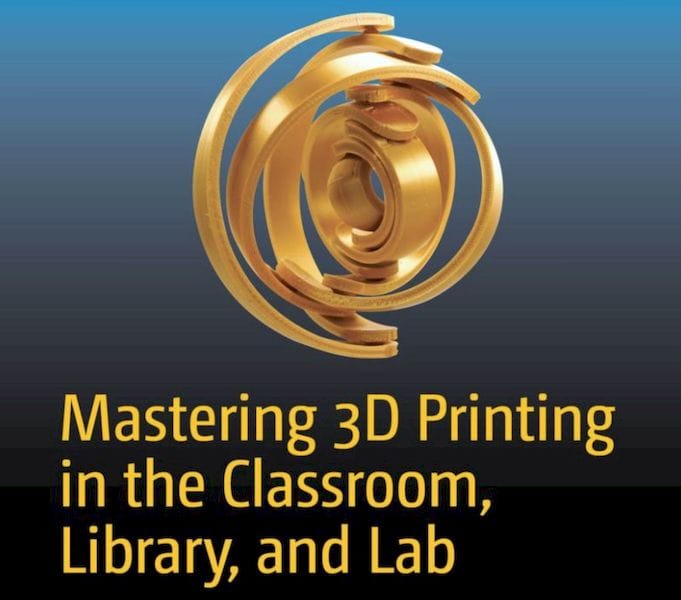![Mastering 3D Printing in the Classroom, Library, and Lab [Source: Amazon]](https://fabbaloo.com/wp-content/uploads/2020/05/image-asset_img_5eb0a00ecae71.jpg)
This week’s selection is “Mastering 3D Printing in the Classroom, Library, and Lab” by Joan Horvath and Rich Cameron.
3D printing is increasingly used in classrooms around the world to initiate children into the concepts of designing and making. The two-stage digital manufacturing approach has been made available at relatively low cost due to the expiry of patents several years ago.
This means that many educational institutions can now afford to own and operate a 3D printer in the classroom, and thus allow students to use 3D CAD tools to design and ultimately produce objects. And they’re doing so using modern digital manufacturing techniques, albeit in small sizes, with constrained materials and (usually) free 3D CAD tools.
The ability to physically produce an object that previously was only in one’s mind is incredibly powerful, and is something that few students of past years had access to. It’s something that we strongly wish to promote because those students will soon grow up and become the industrial makers of tomorrow.
While some school districts now have comprehensive 3D printing programs, equipment and curricula, there are still schools that are smaller and may not have a good idea of how to start on this process.
This book introduces 3D printing in an easy way for educators to attempt the creation of their own 3D printing program.
It begins with the basics, and assumes the reader knows nothing of 3D printing or its associated workflows. Thus it explains the concepts of additive and subtractive manufacturing, and spends time discussing common alternative making processes that might also make their way into the classroom: laser cutting and CNC milling. We’re hoping for educators to choose 3D printing, of course.
The book explains the basic principles behind common desktop 3D printers and even takes you through the process of an actual print, showing the most typical failure scenarios. This is quite important because the first few failures encountered when using a desktop 3D printer can be monumentally discouraging. In consumer scenarios, these often result in abandonment of the machine.
However, I encourage everyone to be persistent and work their way through the initial confusion and towards successful 3D printing, educators and others included.
The book considers the several types of common desktop 3D printers that might be examined by an educational institution for purchase. This is quite important, as inexperienced buyers can sometimes select inappropriate equipment for a school. They also discuss the idea of using a kit rather than a more expensive pre-assembled unit.
They discuss machine positioning and general usage, which should be sufficient to get one started in 3D printing. Their troubleshooting section will also prove quite valuable, although there are plenty of online resources in this regard as well.
Where this book truly shines is in its specific advice for educators. They consider the workflows required for classrooms, where the time available to complete long prints is often severely constrained. Educators should be able to construct a basic 3D printing curriculum based on the information in this book.
Via Amazon











This week’s selection is “3D Printing Projects” by Dorling Kindersley, a.k.a. “DK”.